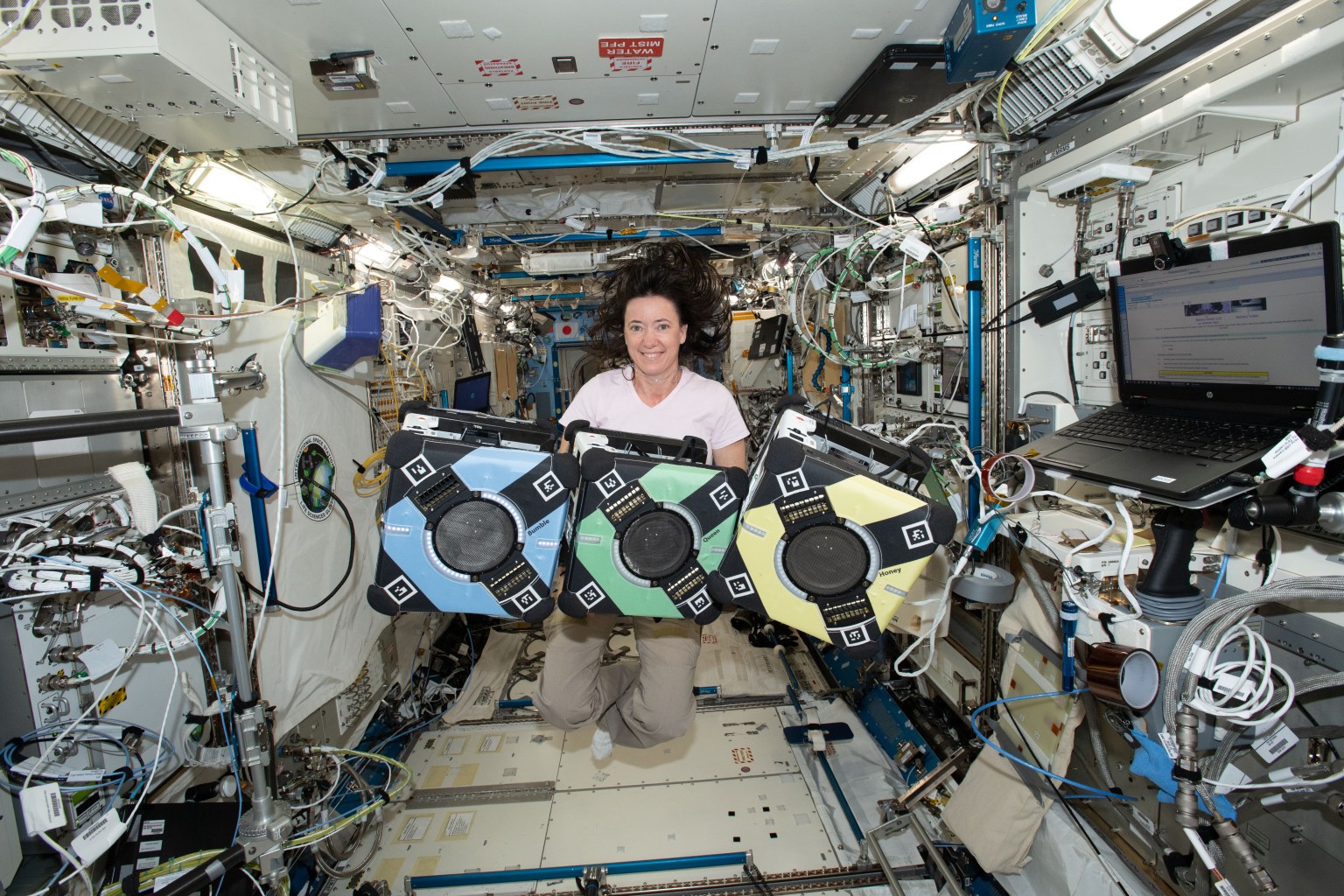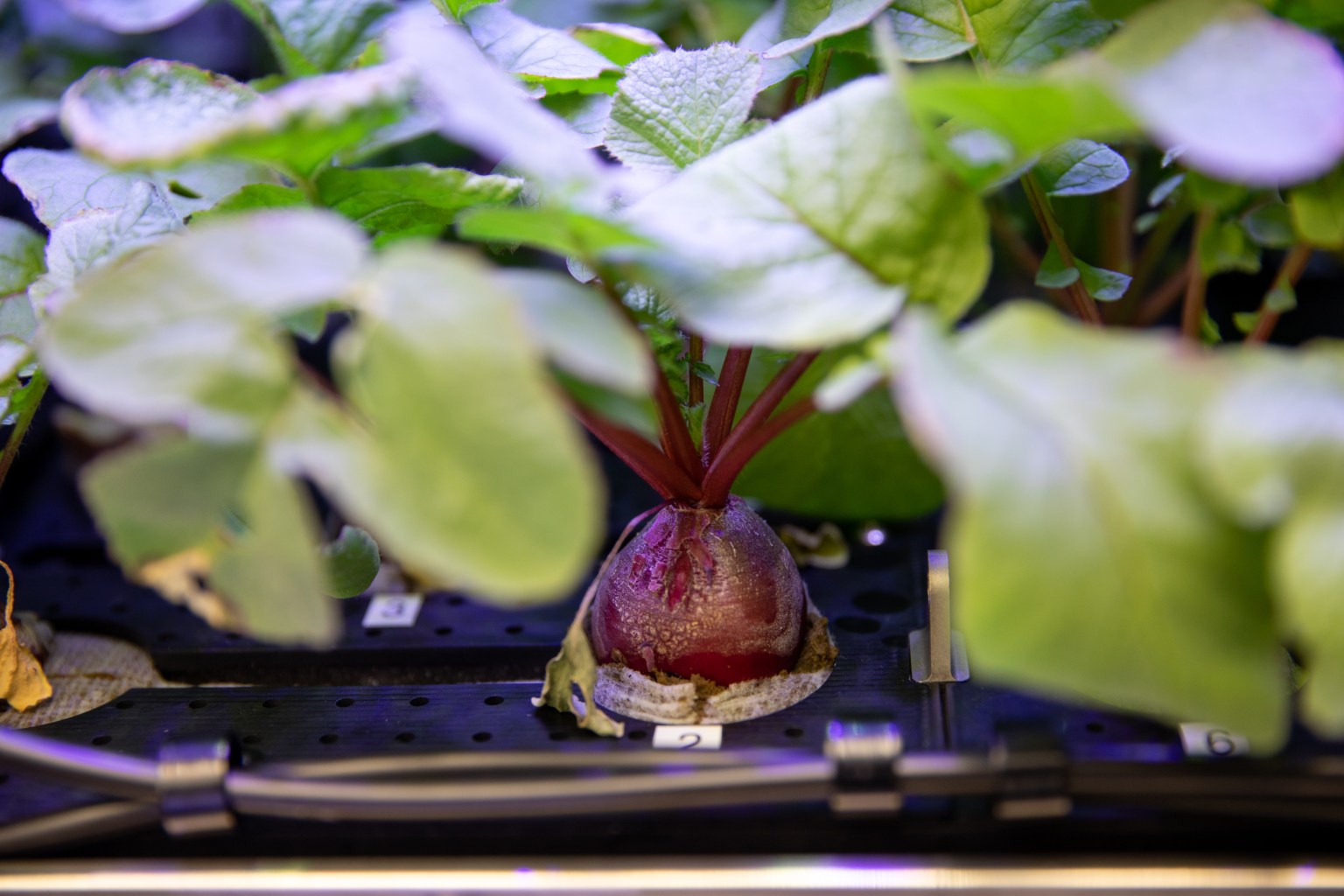As the NASA SpaceX Crew-5 mission wraps up after months aboard the International Space Station, NASA astronauts Josh Cassada and Nicole Mann as well as Koichi Wakata of JAXA (Japan Aerospace Exploration Agency) and Roscosmos cosmonaut Anna Kikina prepare to return home.
During their time aboard the orbiting laboratory, these crew members contributed to scientific investigations and technology demonstrations to help prepare humans for future space exploration missions and generate benefits for humanity back on Earth.
Look back at Crew-5’s scientific journey aboard the space station.
Download full-resolution versions of all photos in this article.
Power up for science
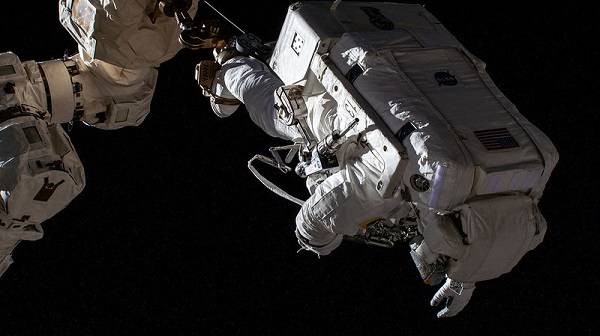
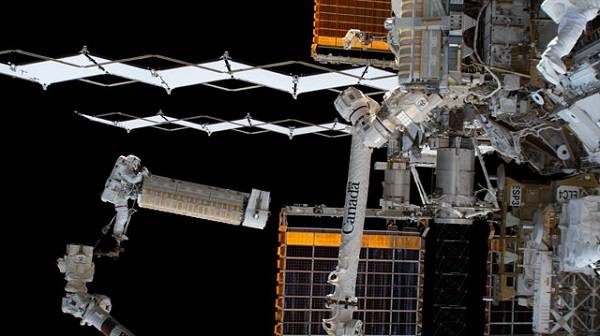
NASA astronaut Josh Cassada rides the Canadarm2 robotic arm during two separate spacewalks to prepare the space station for an upgrade with an International Space Station roll-out solar array (iROSA) previously tested on station. The iROSA is a new type of solar panel that rolls open in space like a yoga mat and is more compact than previous rigid panel designs. Once all six iROSAs are installed, the station’s power generation is expected to increase to a combined total of more than 250 kW, more than a 30% increase, benefiting space station research and operations.
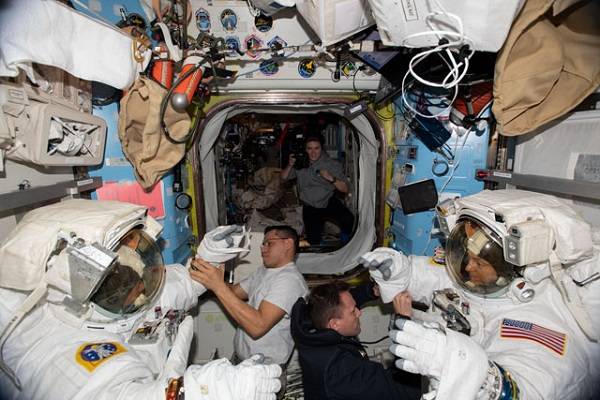
NASA astronauts Frank Rubio and Josh Cassada (middle left to right), assist astronauts Koichi Wakata of JAXA and Nicole Mann of NASA (far left and right) out of their Extravehicular Mobility Units, or spacesuits. The spacewalkers had just finished a seven-hour and 21-minute spacewalk installing a modification kit on the space station’s starboard truss structure, preparing the orbital lab for its next roll-out solar array. Cosmonaut Anna Kikina is in the background participating in post-spacewalk photography activities. During their time on station, Crew-5 supported power upgrades for new iROSA installations.
Human health research on station
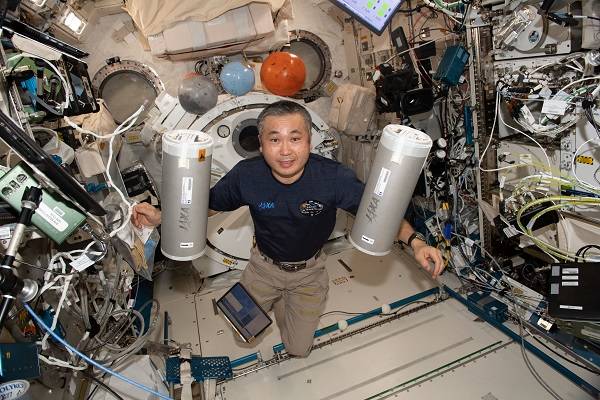
JAXA astronaut Koichi Wakata prepares Moderate Temperature PCG samples for return to Earth inside the SpaceX Dragon cargo craft. This investigation grows high-quality protein crystals in microgravity that scientists use to develop pharmaceutical drugs and to study unknown enzyme reactions.
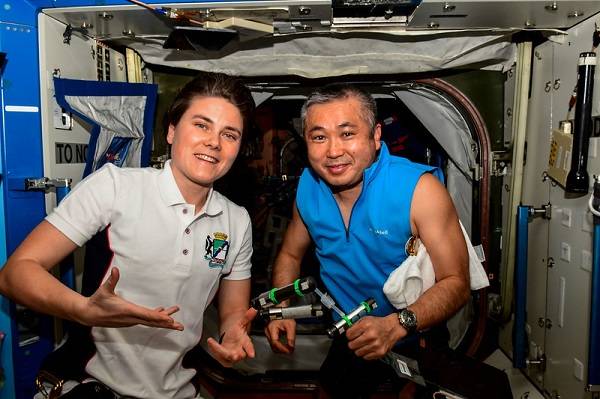
Two crew members pose together with dosimeters, or radiation detectors, floating weightlessly in the microgravity environment of the space station. Studying and measuring radiation exposure is critical to keeping crews safe during their time in space.
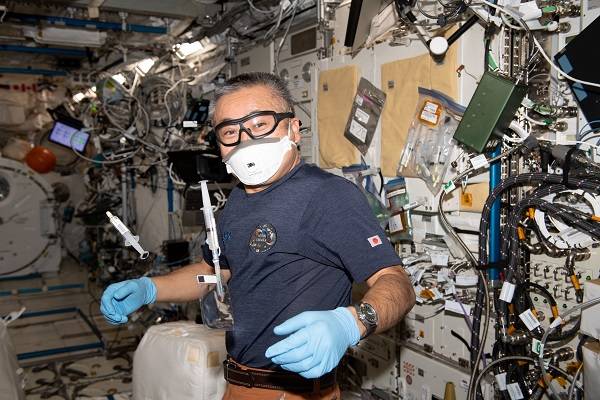
JAXA astronaut Koichi Wakata works on the Neural Integration System investigation. The investigation uses nematodes (also known as roundworms) to examine how microgravity affects the nervous system. Previous experiments have shown that the C. elegans nematode experiences muscle atrophy and reduced motor activity and metabolism in microgravity. Research also has shown that space can affect the nervous system, and neural networks may transmit the effects of microgravity throughout the body. Results could support the development of countermeasures to protect crew members on future space missions and contribute to better health for the aging population on Earth.
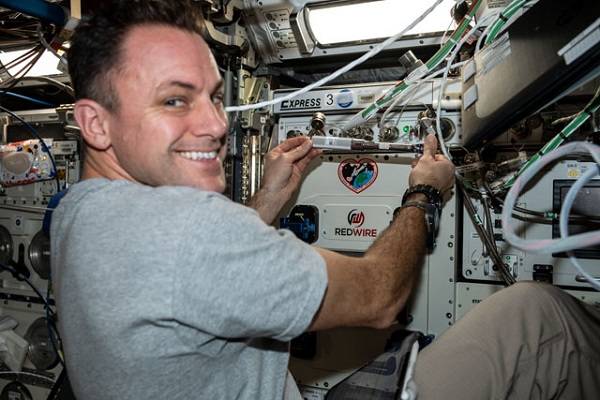
NASA astronaut Josh Cassada works on the space station’s BioFabrication Facility (BFF). BFF is a steppingstone in long-term plans to manufacture whole human organs in space. After arriving to station in 2019, the facility successfully printed a partial human knee meniscus and a large volume of human heart cells. It returned to Earth in 2020 for maintenance and upgrades, including new temperature-controlled printheads that will allow the use of bioink formulations that were not possible in the previous BFF configuration. During their time on station, Crew-5 reinstalled BFF for continued testing of in-orbit tissue manufacturing.
Preparing for life in deep space
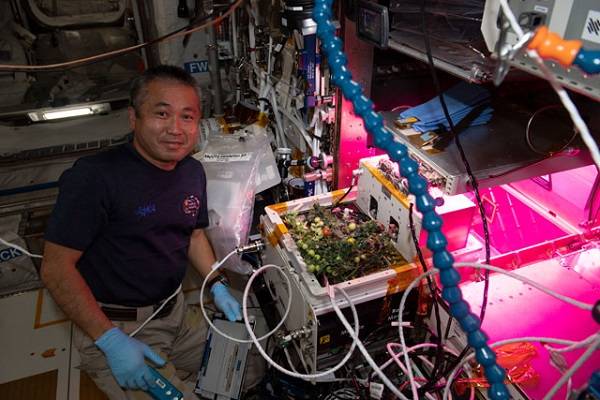
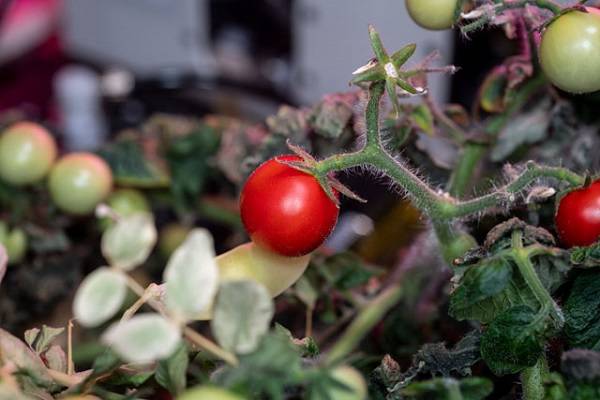
The eXposed Root On-Orbit Test System (XROOTS) uses hydroponic and aeroponic techniques to grow plants without using soil. The XROOTS system is a scalable alternative to current space-based plant systems and could help sustain crews on long-duration space flights farther away from Earth where resupply missions become less viable. The top photo shows astronaut Koichi Wakata of JAXA checking tomato plants growing inside the space station. During their time on station, Crew-5 harvested tomatoes grown in the soil-free system.

NASA astronaut Josh Cassada works in the space station’s Harmony module on the BioNutrients-2 investigation. BioNutrients-2 tests using an on-demand system to produce specific quantities of key nutrients from yogurt, a fermented milk product known as kefir, and a yeast-based beverage.
Studies have determined that many vitamins degrade in both food and supplements during the expected time frame of future long-duration missions. The ability to produce in-flight vitamins and nutrients could help maintain crew health on these missions while reducing launch mass and volume requirements. The investigation also may provide insight into the on-demand production of other biomolecules, which could have a range of future space applications.
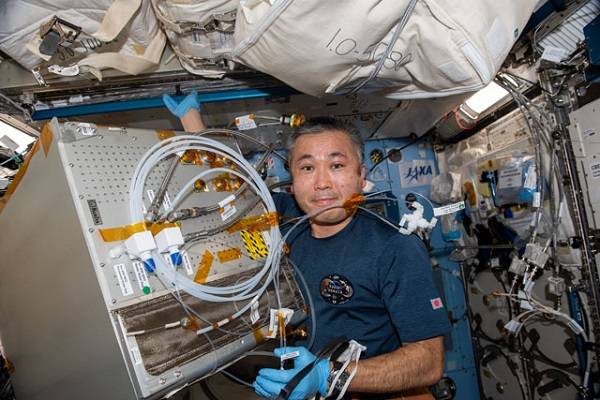
Astronaut Koichi Wakata of JAXA works on JEM Water Recovery System (JWRS) components inside the space station’s Kibo laboratory module. JWRS generates potable water from urine. During long-duration space missions, water supply could become a limiting factor. Demonstrating the function of this water recovery system on orbit contributes to updating the Environmental Control and Life Support System to support astronauts on both the space station and future exploration missions.
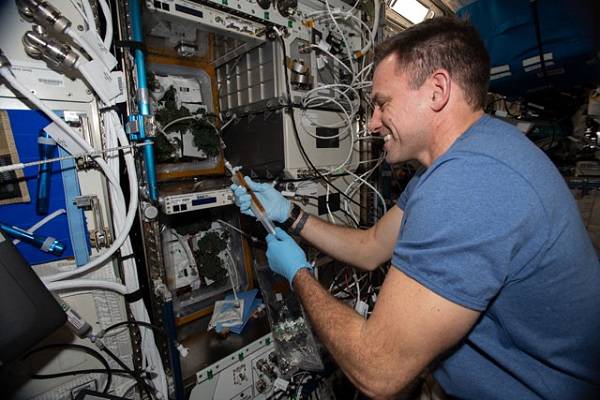
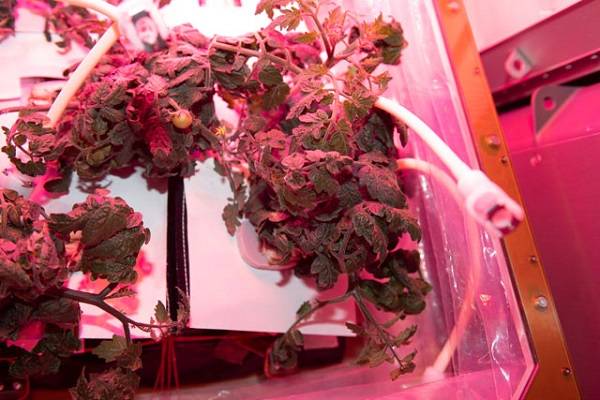
In the top photo, NASA astronaut Josh Cassada works on the Veg-05 experiment, the next step in efforts to address the need for a continuous fresh-food production capability in space. The experiment uses the space station’s Veggie facility to grow dwarf tomatoes, seen in their early growing stages on station in the bottom photo. The experiment examines the effect of light quality and fertilizer on fruit production, microbial food safety, nutritional value, and taste acceptability. Growing plants also can enhance the overall living experience for crew members.
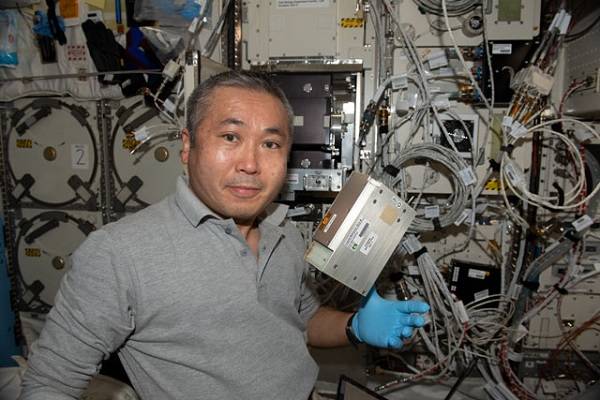
JAXA astronaut Koichi Wakata installs hardware to the Cell Biology Experiment Facility (CBEF) for the Liquid Behavior experiment. Liquid Behavior studies how liquids move in a container in simulated lunar gravity to generate data to improve lunar rover designs. The CBEF can create artificial gravity environments simulating the Moon (1/6 g) and Mars (1/3 g) in the Japanese Experiment Module of the space station. A camera captures video images of liquid behavior under these various gravity environments.
Looking to Earth
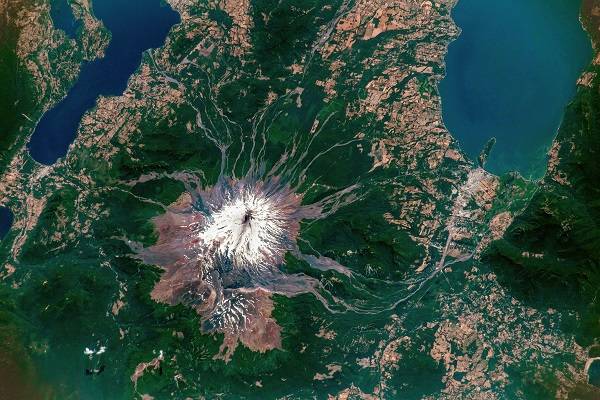
Chile’s Villarrica volcano emits steam and other volcanic gases in this photo taken from the space station as a part of the Crew Earth Observations (CEO) study. The gases come from a series of minor explosions—called Strombolian eruptions—that have been ongoing at Villarrica since October 2022. Located along Chile’s southern Andes, Villarrica is one of the most active and dangerous volcanoes in South America; it typically erupts every three to six years. Photos like these taken by astronauts from the space station play an important role in monitoring and recording Earth’s natural phenomena.
Satellites sent into orbit from station
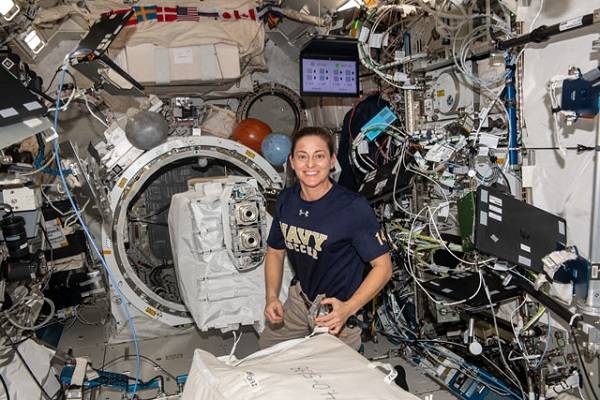
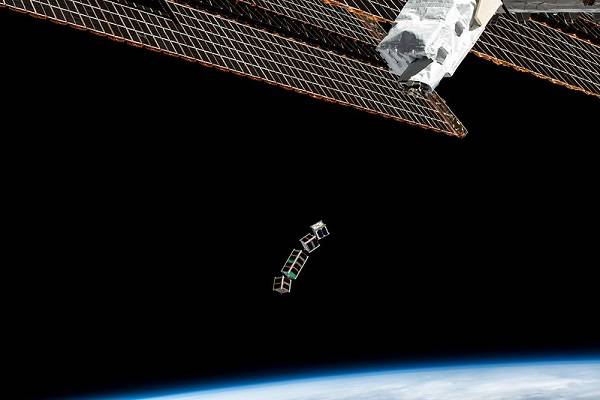
The top photo shows NASA astronaut Nicole Mann removing a small satellite deployer inside the Kibo laboratory module’s airlock. Small satellites are deployed into Earth’s orbit for a variety of scientific studies and technology demonstrations.
The bottom photo shows a set of four CubeSats released from a small satellite deployer on the outside of the Kibo laboratory module. The J-SSOD-23 CubeSat deployment mission included: PEARLAFRICASAT-1, the first satellite developed by Uganda at the Science, Technology, and Innovation Office of the President; ZIMSAT-1, Zimbabwe’s first satellite developed by Zimbabwe National Geospatial and Space Agency; TAKA, developed by Kyushu Institute of Technology (Japan); and SpaceTuna1, developed by Mitsui Bussan Aerospace Inc. (Japan). Three of the four satellites were developed as a part of the multinational BIRDS-5 Project sponsored by JAXA.
Space technology
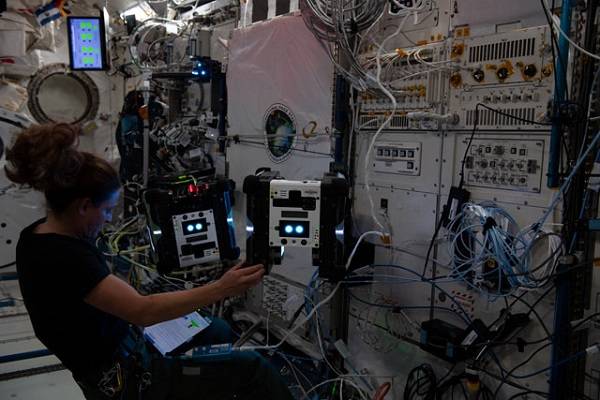
NASA astronaut Nicole Mann works with a pair of Astrobee free-flying robots inside the Kibo laboratory module. The toaster-sized autonomous robots demonstrated using photographic technology for guidance, navigation, and control as part of the Smartphone Vision Guidance Sensor experiment. In general, the autonomous robots are used to assist astronauts with routine chores and give ground controllers additional eyes and ears on the space station.
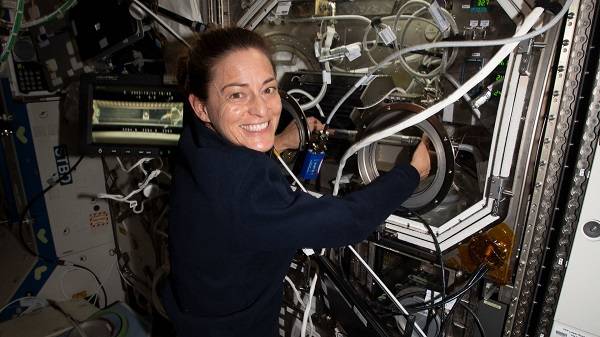
NASA astronaut Nicole Mann swaps samples inside the Microgravity Science Glovebox for the PFMI-ASCENT study on the space station. PFMI-ASCENT demonstrates a passive cooling system for electronic devices in microgravity. Adding microscopic rachets or teeth to flat heated surfaces may passively enable better heat transfer mechanisms, preventing device damage. This technology could reduce the size of electronics and the electrical power they require, supporting expanded scientific investigations on and general use of the station.
Visiting resupply vehicles
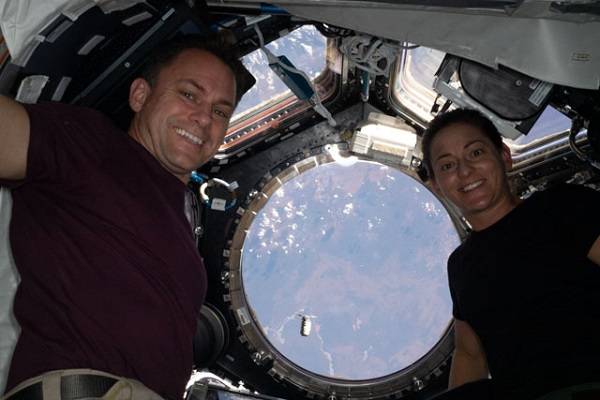
NASA astronauts Josh Cassada and Nicole Mann are pictured inside the cupola. Behind them, Northrop Grumman’s Cygnus space freighter approaches the orbiting lab carrying about 8,200 pounds of new science experiments, food, fuel, and supplies to replenish the crew as they orbit 264 miles above southwestern Australia.
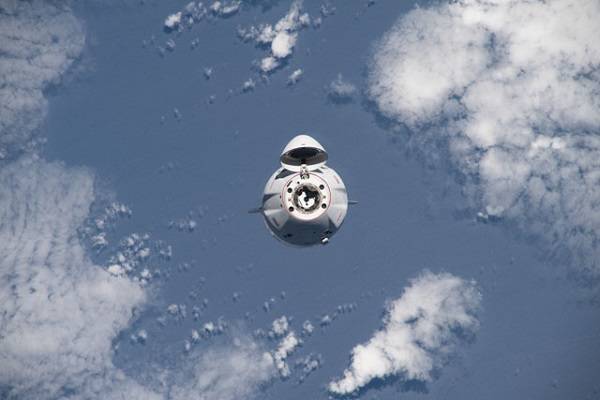
SpaceX’s 26th commercial resupply services mission for NASA, loaded with over 7,700 pounds of science, supplies, and cargo, approaches the space station to dock 264 miles above the Atlantic Ocean in between South America and Africa.
Christine Giraldo
International Space Station Program Research Office
Johnson Space Center




























